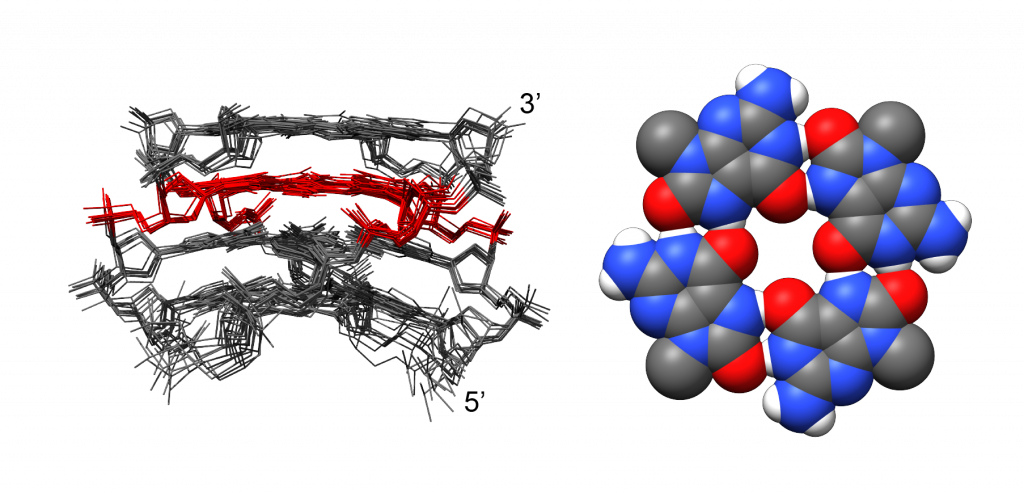New insights into the effect of oxidative stresses on specific DNA structures
|The genetic information in DNA is coded by four nucleobases commonly indicated by letters A (adenine), T (thymine), C (cytosine), and G (guanine). In some specific regions of the genome, such as promoter regions of genes, or terminal parts of chromosomes, there’s an abundance of Gs which are believed to form non-canonical DNA structures, such as G-quadruplexes (see Figure below). This is relevant since the structure of DNA can affect gene expression and DNA replication.

Prof. Janez Plavec, Peter Podbevšek, and Simon Aleksič, CERIC funded PhD student, from the National Institute of Chemistry in Ljubljana, tested the effects of guanine oxidation in a simple G-quadruplex model system. Guanine nucleotides are prone to oxidation by Reactive Oxygen Species (ROS), a byproduct of cellular metabolism that can damage DNA structure. It is believed that G-rich regions may act as DNA damage sinks, preventing oxidation in other areas. To test how oxidized guanine nucleotides affect the structure of a model G-quadruplex, authors employed Nuclear Magnetic Resonance (NMR) spectroscopy available at the Slovenian CERIC Partner Facility at the National Institute of Chemistry in Ljubljana.
This work showed that the introduction of an oxidized guanine nucleotide to a G-quadruplex can cause structural rearrangement resulting in a larger central cavity without significantly affecting backbone structure of the DNA. However, this distortion may also have functional effects. Insights into the impact of guanine oxidation on structural changes in functionally essential genomic regions could reveal possible disease origins.
ORIGINAL ARTICLE



